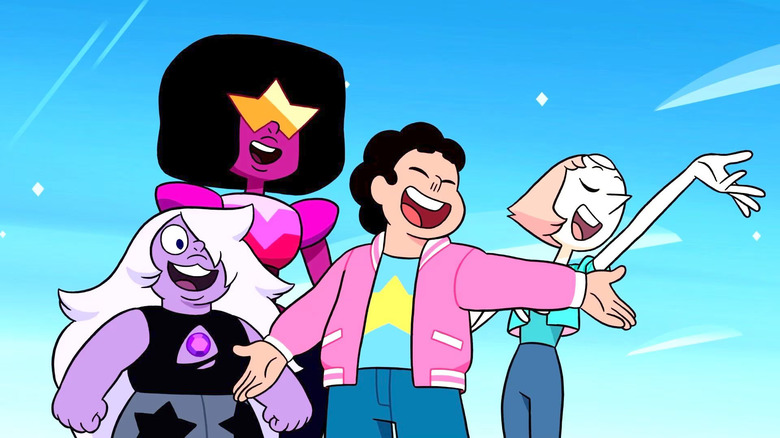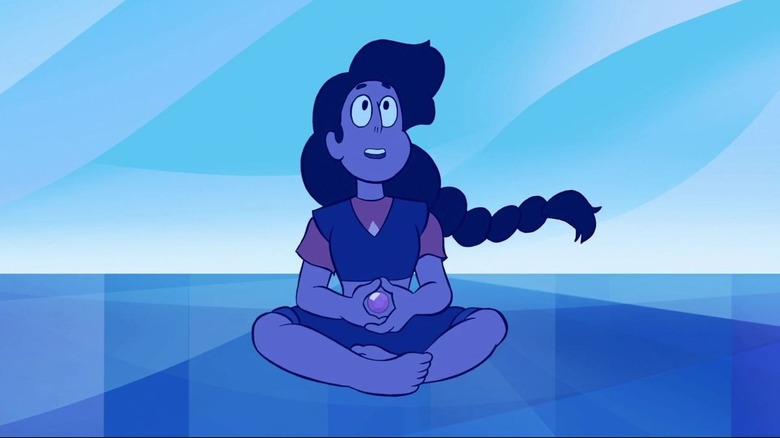Cartoon Network's Steven Universe Made History Behind The Scenes
Cartoon Network has always been a place of experimentation. In the early years, shows like "Dexter's Laboratory" brought Sam Raimi references to animation. In the early '00s, shows like "Samurai Jack," "Ben 10," and "Codename: Kids Next Door," added deep mythologies and more serialized storytelling. And in the 2010s, the network experimented with visuals in shows like "Flapjack" and "Adventure Time," which brought weirdness back into Cartoon Network.
This experimentation continued, with animators who got their start on the likes of "Flapjack" going on to develop influential and fantastic shows on their own. Still, as bold and imaginative as all these shows were, they were still mostly white men in charge of creating those cartoons. That all changed in 2013 with the release of "Steven Universe" — one of the best cartoons of the century and a deeply emotional and inventive show inspired by superheroes and magical-girl anime. The show follows Steven, a young boy living with a group of female alien heroes called the Crystal Gems, fighting to defend Earth from other aliens who seek to conquer the planet. Rebecca Sugar became the first non-binary person to create a cartoon for Cartoon Network, and that's just the beginning of what made "Steven Universe" groundbreaking.
A groundbreaking show in more ways than one
While anime has influenced Cartoon Network shows since the inception of the network, "Steven Universe" took it to new heights, bringing not just parodies or homages, but taking visual, thematic, and structural cues from the medium. Sugar was influenced by shows like Miyazaki's first TV show, "Future Boy Conan," as well as "Dragon Ball," "Sailor Moon" and "Revolutionary Girl Utena." This last one influenced the tone, narrative structure and drama, as well as the breaking of gender barriers of "Steven Universe."
Indeed, gender is at the core of "Steven Universe." The show takes inspiration from the "magical girl" anime genre but stars a young boy who is portrayed as anything but the traditionally masculine protagonist we tend to see in cartoons. Steven is never afraid of showing emotions and he is embraced for his openness. This culminated with Stevonnie, an androgynous "fusion" of Steven and his friend Connie, as well as Ruby and Sapphire becoming a couple. This came on the heels of "The Legend of Korra" introducing a queer couple in its finale in 2014, but even that was implicit, as Nickelodeon wouldn't allow otherwise.
But "Steven Universe" was bolder, more direct. Its legacy is that of a groundbreaking show for queer representation. Even "Nimona" creator ND Stevenson credits "Steven Universe" for paving the way for their show "She-Ra and the Princesses of Power." Speaking with Paper Magazine in 2020, Stevenson explained, "Even the conversations that we were having at the beginning of our plans for including queer characters and relationships was only possible because 'Steven Universe' had done it first." We can only imagine what sorts of shows will follow in the future.

